Grapefruit & Sweet Orange Hand Cream Recipe
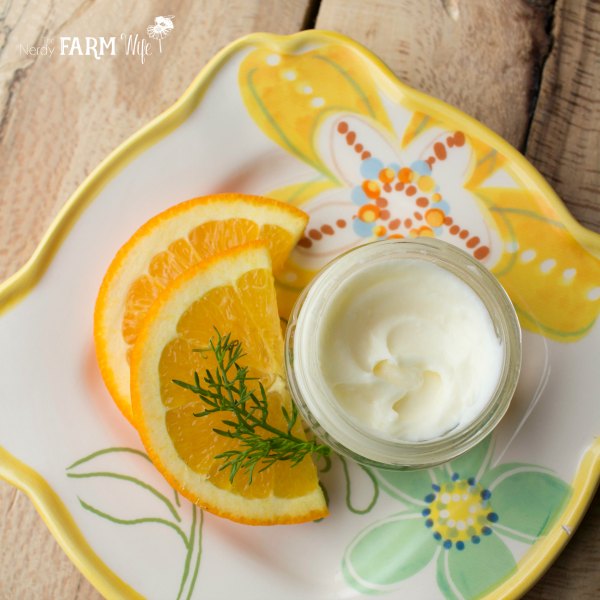
Starting this month, and going forward into 2018, my goal is to get back to the “mad scientist mode” I enjoyed when my blog was younger.
I’ve spent so much time on projects outside of the blog, that I kind of forgot the whole reason I do what I do. I love making products that can help someone with a specific need or problem they might have.
I mentioned all of this to my newsletter subscribers last week and asked for their input on what kinds of recipes they were looking for and how’d they benefit someone they loved and the response was tremendous!
I’ll be tackling one or two a week and sharing the results here on my blog and/or in the newsletter, depending on the topic/project length. (Not a subscriber yet? You can join the fun by signing up HERE!)
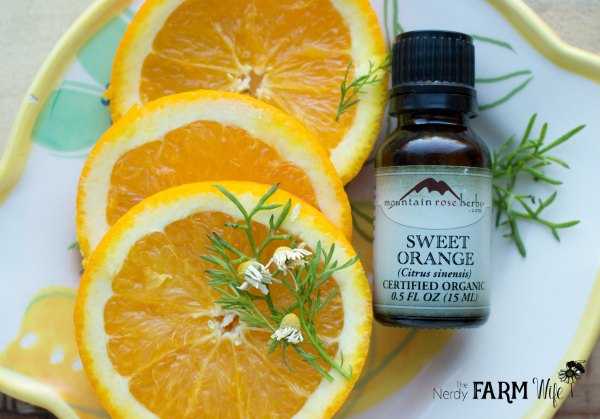
This week’s recipe was created for Rosemary LN who loved the nourishing rose hand cream I created for my nurse friend (see that recipe HERE) and needed something similar for a male nurse whose hands were in awful shape from washing so much, but who didn’t want a ‘pretty’ scent or anything overly scented either.
To help accommodate those preferences, I very lightly scented this hand cream recipe with grapefruit and orange essential oils. I specifically chose those two oils because of their pleasant scent that’s cheerful and uplifting. (Interesting side note: They’ve also been studied for possible effectiveness against some tough pathogens – see HERE, HERE and more with PubMed searches like THIS ONE.)
As with the rose hand cream I made for my nurse friend, I bypassed my usual favorite nature-derived preservative (Leucidal SF Complete – used at 4%, or 4 grams in this recipe) and used 0.5 grams of Liquid Germall Plus instead. Because nurses work with critically ill and immune compromised individuals, it’s imperative that their hand cream stays well preserved and microbe-free. Feel free to use your preservative of choice when making your own. (Want to learn more about preservative options? You might enjoy THIS POST where I wrote up my results while testing various nature-derived preservatives.)
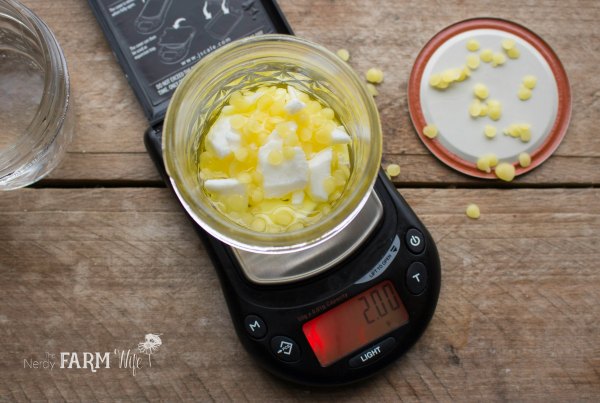
Ingredients
Below is a list of the featured ingredients and why I chose them for this recipe.
Aloe vera liquid – used to soothe and moisturize skin; you could use more distilled water in its place if you don’t have any or are allergic.
Jojoba oil – regenerates and helps to protect skin; you could use other types of oils here if you’d like. Infusing the oil first with an herb like calendula or dandelion could be nice too.
Cocoa butter – forms a protective layer over the skin, helping to keep moisture in. Kokum or another butter could work here too, if allergic to cocoa butter.
Vegetable emulsifying wax NF – helps the water and oil stay blended together. I always use THIS WAX from Mountain Rose Herbs; other brands/types of e-wax may need to be adjusted slightly.
Beeswax – adds an extra barrier of protection over your skin to keep skin moisturized.
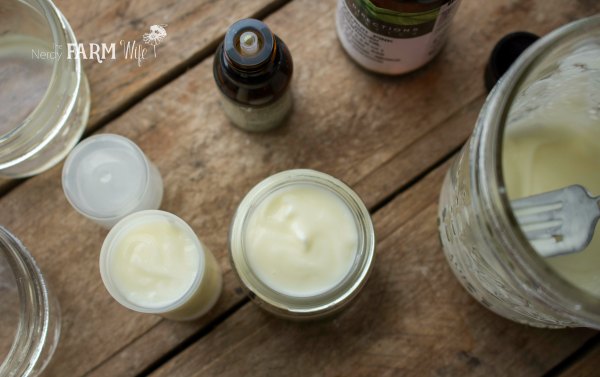
Recipe
You’ll need a little pocket or jeweler’s scale to make this recipe. Ingredients are listed by weight.
Grapefruit & Sweet Orange Hand Cream Recipe
- 50 grams distilled water
- 10 grams aloe vera liquid (or more water)
- 15 grams jojoba oil (or your favorite oil)
- 15 grams cocoa or kokum butter
- 7.5 grams emulsifying wax
- 2 grams beeswax
- preservative of choice
- 4 to 6 drops grapefruit essential oil
- 2 to 4 drops sweet orange essential oil
Directions to Make
Weigh out the water and aloe vera liquid in a heatproof container. I like to use small jelly/canning jars.
Weigh out the jojoba oil, cocoa butter, emulsifying wax and beeswax in a separate heatproof container.
Place the two containers down into a saucepan containing an inch or so of water, forming a double boiler of sorts. Turn the burner to medium low and heat until the butter and wax is fully melted. (This takes about 15 to 20 minutes for me, your time may vary.)
Pour the hot liquid and oils into a clean jar and stir, stir, stir. (I use a fork.) Stir frequently until the lotion starts to thicken as it cools. To speed things up, you can set the jar down into a bowl of ice water while stirring.
Once cool enough for your preservative, stir it in, then add the essential oils and mix well. Pour into containers or jars.
If using Leucidal SF Complete, add 4 grams (since it’s used at 4% of a recipe) or for Liquid Germall Plus, you only need 0.5 grams. Leucidal SF Complete is mild and usually gives me a shelf life of 1 to 3 months. Liquid Germall Plus will last for much much longer.
If there’s another preservative you’d like to use instead, check the usage rates listed on your vendor’s website. LotionCrafter keeps those listed on their products for easy reference.
If you want to leave out the preservative, then keep your cream refrigerated and use it up within a week or so before any microbes have a chance to take over.
Are you a mad scientist at heart too, when it comes to DIY? If so, you might enjoy my Mad Scientist T-shirt!
It was designed by my husband, with artwork by my daughter – that’s a portrait of me she drew about four years ago. :)
You can find it at RedBubble in all kinds of styles, colors and sizes. (Be forewarned, the women’s t-shirt I’m wearing in this photo runs small – I’m wearing a medium.)
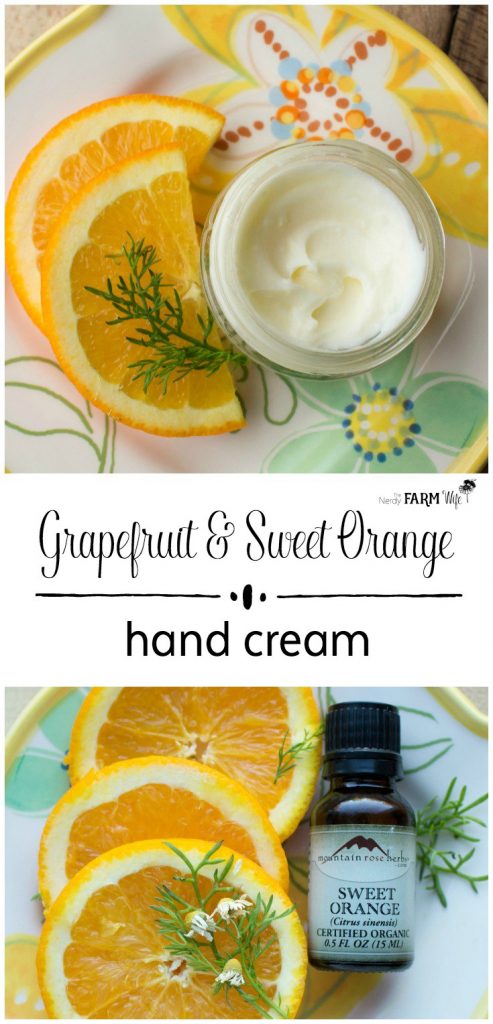

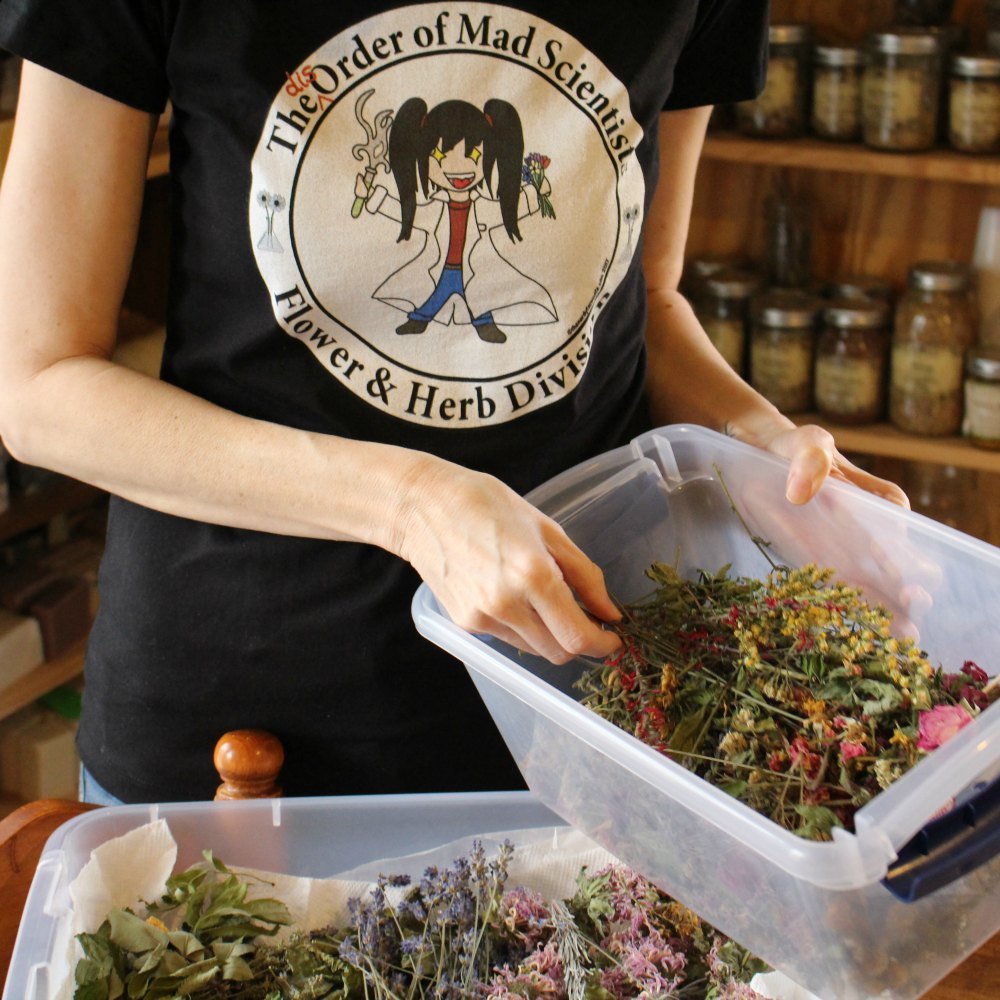
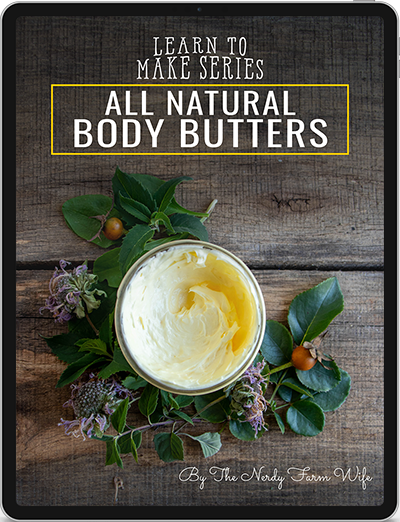

I don’t see the amount of the preservative used.
Thank-you.
Hi Terri, Sorry about that! I completely forgot to put the amounts! Oops!
If using Leucidal SF Complete (the more natural option), then I use 4 grams.
For the Liquid Germall Plus, I went with their maximum rate of .5%, which would be 0.5 grams in this recipe.
Can the emulsifying wax be eliminated? or substituted with additional beeswax? What about the preservative? I would prefer not to use it.Thank you for all your recipes.
Hi Terry! You could make a cream with beeswax instead; they’re a little trickier than using emulsifying wax, but can be done! :)
The two waxes can’t be interchanged in the same recipe though since a cream made with emulsifying wax can hold a lot more water than a beeswax-based cream.
Here’s a rose cream with beeswax I’ve written about:
https://thenerdyfarmwife.com/aloe-rose-anti-aging-skin-cream/
You don’t have to add a preservative, but if not, then you’ll want to keep your cream in the fridge and use it up within a week or so.
Is there a way to make this cream without the aloe? Could water be substituted instead?
Going to make some balms and creams for Christmas gifts, your site is absolutely wonderful!!!
Hi Tresha! Yes, you could definitely omit the aloe and use water instead. So happy to hear you enjoy the site! :)
Could Colloidal Silver be used in place of the liquid for a preservative?
Hi Ruthann! I’ve wondered about that too & want to test out colloidal silver next time I do experiments with some more natural preservatives. (The plan for that is January.) It will be interesting to see how it does! I’ll be sure to update my site with the experiment results!
I’m super interested in colloidal silver as well. I use it all the time – it’s a life saver
Will keep everyone posted on my experiments! :)
Interesting, I’d love to try this…in this recipe, how many drops or % of the preservative required?
Thank you as always for all your wonderful recipes!
Mel
Hi Mel, So happy you like the recipe! I forgot to add that information – sorry about that! :)
For Leucidal SF Complete, which I normally like to use, it would be 4%, which would be 4 grams in this recipe. For Liquid Germall Plus, I used 0.5 grams.
I love your blog. So many recipes to choose from and great information about the benefits of each ingredient. Im going to try this recipe when I get out of school for the holidays :)
Thanks Camille! I appreciate the kind words about the blog & hope you enjoy the recipe! :)
Could I use Optiphen in this recipe ?
Thank you
Hi Dasha! I’m not personally experienced with using Optiphen, but believe it should work in this recipe. I have had some write to me who had trouble with Optiphen causing their lotions to curdle, so you might want to keep an eye out for that & perhaps do a search to see if there are ways to prevent that from happening.
Jan, thank you for your wonderful recipes! I always look forward to what you’ve got “cooking”.
I’ll be making this recipe without any fragrances added. My husband is a respiratory therapist who also has asthma. He and most of his patients cannot tolerate fragrances of any kind, even natural ones. Many patients with other conditions may get severe headaches, dizziness etc. We encourage all healthcare professionals to abstain for all fragrances and fragranced products.
Hi Linda, Thanks for the reminder! I have a relative with asthma who also can’t tolerate essential oils or fragrance oils. Many people think that because they’re natural, essential oils are okay for everyone, but unfortunately it’s just not the case.
Would this make a good body lotion or better for hands only? Love your ginseng face cream.
Hi Jenny! I use it as a body cream too, though it’s not my favorite for my face. (I like the rose version better for my face.) :)
Is it safe to go outside if it is a sunny day ? I ask because of grapefruit and sweet orange un that cream ( citrus oils photosensitivity )
Hi Charline, That’s a great question! Sweet orange is one of the citrus oils that doesn’t carry the risk of phototoxicity and grapefruit can be used with a proper dilution rate.
Here’s an excellent article with helpful reference lists that goes further into the topic: http://www.usingeossafely.com/phototoxic-essential-oils-how-to-stay-safe-in-the-sun/
This recipe sounds lovely :)
Thank you Liz! :)
Hello, I was wondering if your new book “Simple and Natural Soapmaking” has the same information as you ebooks on soapmaking or if it has all new information and recipes. I am asking because I actually prefer printed books. Thank you for your time.
Karen M.
Hi Karen, Thanks for asking! The Simple & Natural Soapmaking print book has completely different recipes than my ebooks. It also has a photo gallery of soaps made with a variety of natural colorants which many have found to be a helpful reference. :)
I thought I had made a successful batch of this lotion but after 12 hours it had a layer of liquid on top. I’m unsure if it’s the water or the preservative. I used optiphen plus at 1%.
Do you have any suggestions?
Hi Nicole! Optiphen is known to be something of a troublemaker when it comes to lotions, sometimes causing them to separate or curdle.
The best trick I’ve read for using Optiphen is to stir, stir, stir very frequently while it’s cooling and that seems to help prevent the emulsion from “breaking”.
Hi. I made this lotion and it smells amazing. I kept it on my nightstand and the issue I ran into is after a week it started to grow mold. I added 4 grams of Leucidal SF Complete when I added the essential oils. I thought that the Leucidal would keep it shelf stable. Was I incorrect? Any ideas on troubleshooting this? Thanks!
Hi Diana, I’m so sorry to hear that! I’ve had some readers write and tell me about shorter shelf life using Leucidal products as well, while others have had a similar experience as me with at least a 3 to 4 months shelf life.
I’m a little bit at a loss to know why it’s working well for some and not others. It sounds like you kept it in a spot with a comfortable temperature, which is great. I wonder if sometimes they get exposed to extreme temperatures during shipping and that affects potency?
Also, did you happen to use a jar to store it in? If so, you could try something like an airless pump bottle instead, to reduce risk of contamination when it’s opened and closed for use.
Unfortunately, the more natural preservatives don’t have quite the power and oomph of their synthetic counterparts, so it’s a bit of a tradeoff to use them sometimes. :/
Just made this! It was super simple, took forever to cool down. :) Its really nice, absorbs well. Thanks Jan
Hi Izzy, I’m so glad you like the recipe! :)
I just found your website the other day and I love it. Turns out I had just purchased your soap book and love that too. I was surprised to see you had this blog. Apparently I can be a little slow. Anyway, I was curious what the difference between Aloe Vera Gel and Liquid are. Is the Liquid the same as juice and is it just watered down gel. I would really like to try this but I just want to make sure I get the right ingredients.
Hi Elizabeth! So glad that you’re enjoying the web site and the book! :) Aloe vera liquid is very watery and can be used to directly replace the water in lotions and soap.
You can find it at places like Bramble Berry and Bulk Apothecary.
Aloe vera gel usually has some thickeners and/or gums to help it have a thicker texture. I really like the kind from Mountain Rose Herbs, but have bought a variety of types from my local health store too.
I’ve made lotion with both the gel and liquid and they both work great. The gel tends to give lotion a little bit of a thicker texture, but it’s a nice texture.
Can I use 100% aloe vera juice and eliminate the distilled water?
Hi Donna, Yes, you sure can! That should make a very nice cream. :)
Is the grapefruit essential oil safe even though it is phototoxic, as you’ve mentioned in other articles?
Hi Jess! That’s a great question! Yes, the amount is safe because of the low level/percentage rate used.
Robert Tisserand says grapefruit can be used safely in the sun if diluted well – at a max 4% dilution rate.
In this recipe for 100 grams (3.5 oz) of lotion, there are 4 to 6 drops grapefruit essential oil.
For a 0.5% dilution rate, you’d use 10 drops, so this is somewhere around half of that, so because it’s such a super low amount, it’s still considered a safe range. ?
Thanks for your help, Jan! Does that mean that I could use grapefruit in a lip balm, just assuming I use a similarly low dilution rate? I’m a grapefruit nut, so I basically would like to use it everywhere, assuming it’s safe.
Hi Jess, I absolutely love the scent of grapefruit too! In theory you could, but the skin on our lips is so thin and sensitive, I still hesitate to use much grapefruit EO in the lip area.
Maybe if you do try it in lip balm, cut the amount even further by using something like half sweet orange and half grapefruit essential oils.
Use EO Calc to make sure your lip balm is in the safe range & you should be good to go! :)
https://www.eocalc.com/enter-your-own-blend/